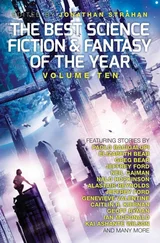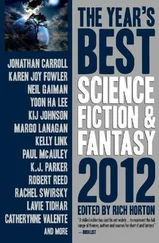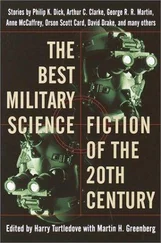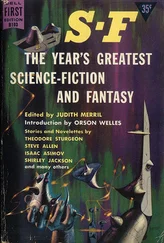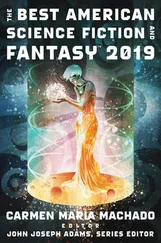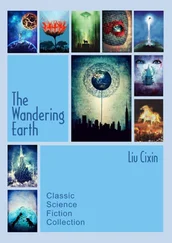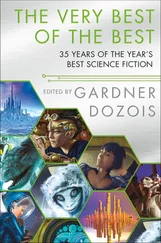Amy and Hayato had invited them to dinner. There were six places set, but one stayed empty. Hayato held the child in his arms. The boy was sleeping.
“Dear colleagues… forget that. Dear friends,” she said. Hayato nodded.
“Today I would like to thank you for doing everything you could to support the mission, and, more importantly, to help each other. No one can take that away from us. Yet I would like to thank one person in particular.”
She looked at the empty chair.
“Marchenko, you cannot be with us today. But I hope you won’t think it arrogant, but rather an expression of our sincere gratitude if we also name our son after you, by giving him a second name. Dimitri Sol. I think that sounds great. And I hope we will soon be able to tell him about you, Mitya.”
Francesca sobbed, and Martin had a hard time suppressing his tears.

Author’s Note
Thank you for coming on this journey with me! I can’t tell you how much it means to have your support and your company on this long expedition to the outer regions of the solar system. And now, let’s sit down together and I’ll tell you a bit about myself.
When I was a child, I always wanted to become an astronaut. I’m sure I shared this wish with many of you. I was only three years old in 1969, so I don’t remember Neil Armstrong’s first steps on the moon. However, I have a clear memory of the last ones in 1972. It was so cool seeing Eugene Cernan and Harrison Schmitt – admittedly I didn’t recall their names and had to look them up – driving around on the moon in their Moon Buggy, even if it was on a black and white TV set. I really wanted to be next but unfortunately, theirs was the final mission of the Apollo program.
So I chose my second-favorite career path, to be a writer. After studying physics, I worked as a journalist for many years, writing about science and technology and, yes, space. The magazine I work for, not coincidentally, is called SPACE. I get to see contemporary space hardware, follow launches (my last one was from Vandenberg AFB in May 2018), and interview people involved with what has now become a viable industry.
But I want to write about more than today’s reality. Even if I never become an astronaut, I can imagine adventurous spaceflights and write them down—I am still hoping for Blue Origin to offer affordable tickets to space, and yes, I have already registered my desire with them. In the meantime, my kind of fun is to make my fiction as realistic as possible, based on current science – a degree in physics certainly helps – but also based on viable technology. Prognoses are hard, especially concerning the future, but I have a bit of hope that someday you might say, Wow, what’s happening now is pretty similar to what I read in that book! I can’t remember the name, but it was written by that Morris guy with the middle initial Q .
Of course, I hope that you will continue to travel with me. The story of the ILSE expedition is not over. The first three chapters of the next book are included below. As the story develops, the crew must overcome a much greater threat than on Enceladus. Titan, another moon of the ringed planet Saturn, ist most notable for its thick atmosphere. Did you ever try to fly? On Titan you could, and Francesca will even show you how to make your own wings. You can preorder The Titan Probe , the sequel to The Enceladus Mission , now for only $3.99 at Amazon by opening this link:
hard-sf.com/links/301759
See you back in space!
If you register at hard-sf.com/subscribeI will inform you about future publications of my science fiction titles. As a bonus, I will send you the beautifully illustrated PDF version of The New Biography of Enceladus for free!
On my website at hard-sf.comyou will also find interesting popular science news and articles about all those worlds afar that I’d love to have you visit with me.
I have to ask you one last thing, a big favor: If you liked this book, you would help me a lot if you could leave me a review so others can appreciate it as well. Just open this link:
hard-sf.com/links/302316
Thank you so much!

https://www.facebook.com/BrandonQMorris

https://www.amazon.com/author/brandonqmorris

https://www.bookbub.com/authors/brandon-q-morris

https://www.goodreads.com/brandonqmorris
The New Biography of Enceladus


Introduction
Astronomers noticed relatively late that Enceladus would make a fascinating travel destination. It had been discovered in 1789 by the German-British astronomer William Herschel as the sixth moon of the planet Saturn. At first sight, it acted as would be expected from a moon of its size. It was only the photos taken by the Voyager probes in the 1980s that changed this perception. During its fly-by on August 26th, 1982, Voyager 2 sent spectacular images of the snow-covered surface, the network of craters and of deep fissures in the ice. These also showed that Enceladus was uncommonly bright, as it reflected 99 percent of the incoming sunlight.
The photos spurred imagination among astronomers in several ways. For one thing, the photos showed large plains without any craters, which indicated they must be relatively fresh. Therefore, there must be processes in the interior of the moon that renewed the surface. The high albedo (reflectivity), the highest of any known in our solar system, can also only be explained by a snow-covered surface that is refreshed at regular intervals. But if there was no atmosphere, where would the snow come from?
And then there was the mysterious E Ring of Saturn, which the Allegheny Observatory of the University of Pittsburgh first photographed in 1966. Spectroscopic analysis showed that it consisted mostly of small ice crystals—and there were other aspects of this ring that were exceptional. Enceladus moves around Saturn along the inner edge of the E Ring, exactly where the ring has its greatest density, which quickly made this moon the suspected cause for the unique properties of the E Ring.
On July 14, 2005, the Cassini probe sent by NASA and ESA caught it red-handed. It photographed clouds of frozen water vapor above the surface of Enceladus, which was covered by relatively warm fissures. Two years later, Cassini provided the first photos of the geysers near the South Pole shooting water from the interior of the moon into space. A portion of that water seemed to provide new material for the E Ring, while the rest fell back down on the moon and made it shine in the whitest of whites.
What other secrets does Enceladus hide? Follow me to an icy world, which might harbor unknown forms of life.
Читать дальше
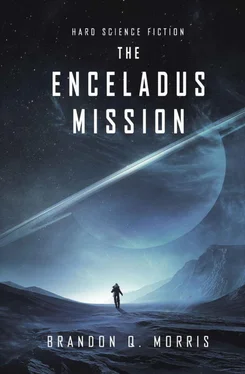

 https://www.facebook.com/BrandonQMorris
https://www.facebook.com/BrandonQMorris https://www.amazon.com/author/brandonqmorris
https://www.amazon.com/author/brandonqmorris https://www.bookbub.com/authors/brandon-q-morris
https://www.bookbub.com/authors/brandon-q-morris https://www.goodreads.com/brandonqmorris
https://www.goodreads.com/brandonqmorris

